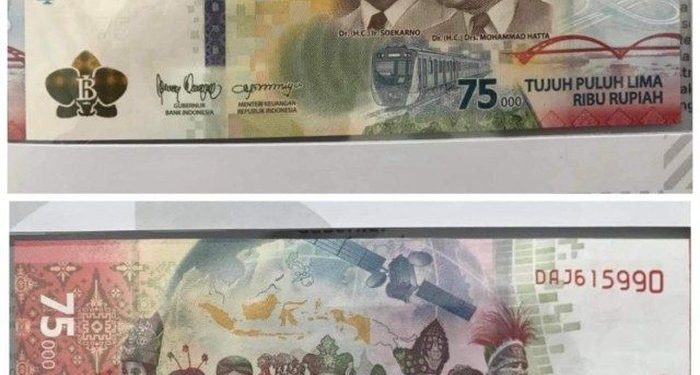There is a narrative that states that one of the new Rp. 75,000 notes wore traditional Chinese clothes.
This narrative is busy circulating on social media, one of which comes from a question on the Twitter account @ Rianaaa_na09. The account questions the origin of the traditional clothes.
Then there is another account that answers that traditional clothes come from China. However, currently the account owner @ Rianaaa_na09 locks his account.
The narrative about Chinese traditional clothes was then continued by an anonymous account @ 2nd_NN4y4r4. Again, the traditional clothes are said to have originated from China.
Pandu’s friend of North Kalimantan, Prayoga Bayu, emphasized that the traditional clothes in the new money were the traditional clothes of Tidung, North Kalimantan.
Sahabat Pandu is an organization that collaborates with the Ministry of Education and Culture in introducing local culture.
“That is the original traditional clothes of North Kalimantan. The traditional Tidung clothes are from the Tidung tribe. Now they are the traditional clothes of North Kalimantan Province,” said Prayoga on Tuesday, August 18 2020.
Prayoga said the model in the new money was the son of Tarakan, North Kalimantan.
The officer of the Republic of Indonesia (Peruri) Money Printing Team immediately photographed the child for a new model of money.
Prayoga also denied the narrative that the model was Chinese because of its slanted eyes. He explained that the Tidung tribe is included in the Dayak tribe.
“Actually, the Tidung tribe belongs to the Dayak Tidung tribe, that’s why it’s slanted, but in its history, the Tidung tribe doesn’t want to be called the Dayak tribe, because the Tidung tribe is also Muslim, spread across North Kalimantan to Peninsular Malaysia,” he explained.
Meanwhile, on the Bank Indonesia website, there is an explanation of the meaning of photos of children in regional clothes displayed on the 75th Anniversary of Independence Commemoration of the Republic of Indonesia.
This is part of the theme “Strengthening Diversity.”



